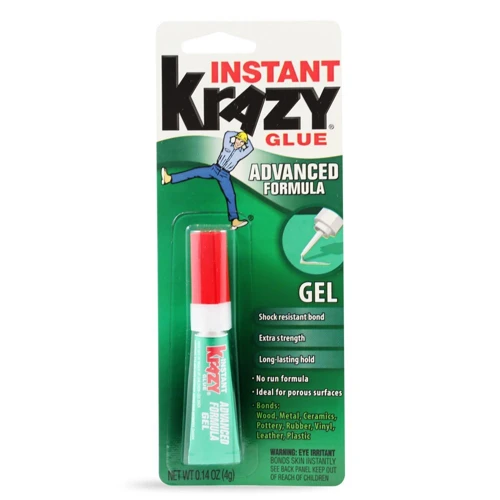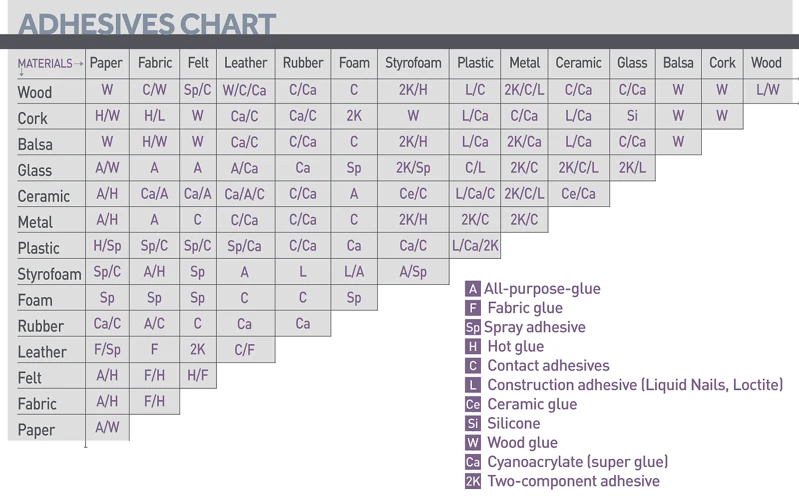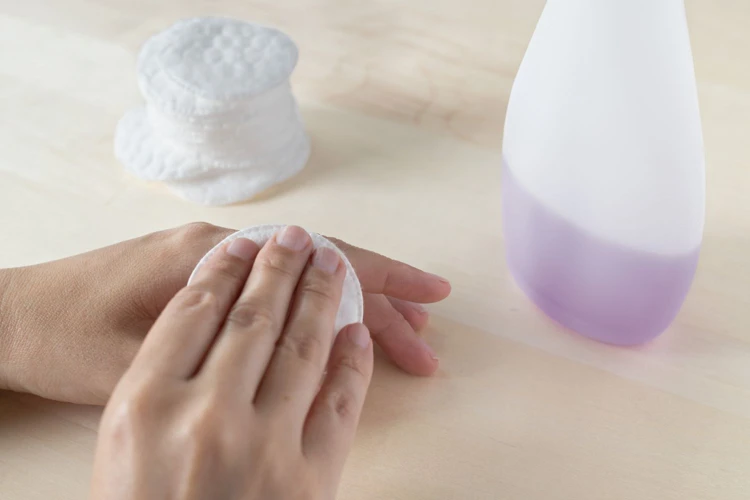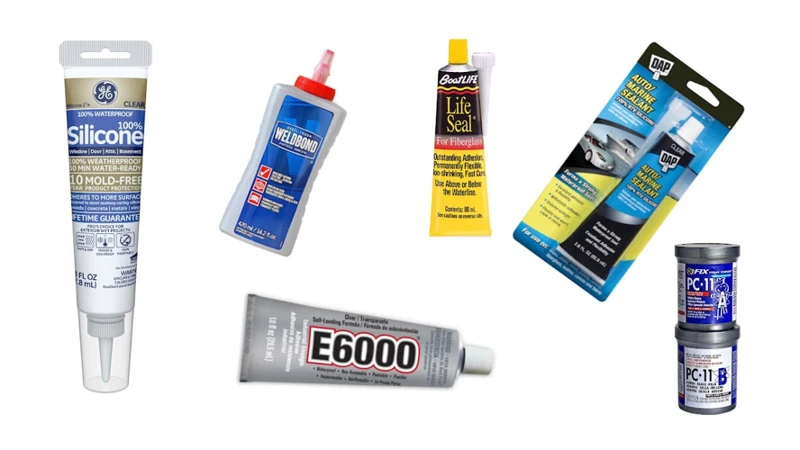Have you ever found yourself in a sticky situation with Crazy Glue? Perhaps you accidentally glued your fingers together or spilled it on an unwanted surface. Don’t panic! Removing Crazy Glue may seem like a daunting task, but with the right materials and techniques, it can be done easily and safely. In this article, we’ll guide you through effective methods that will help you remove Crazy Glue from a variety of surfaces. From acetone to warm, soapy water, we’ll cover it all. So, if you’re struggling to remove Crazy Glue, read on for tips and tricks that will save the day.
What is Crazy Glue?
Understanding the Stickiness: Crazy Glue
Crazy Glue is a type of fast-drying adhesive that can bond various surfaces together. It is a common household item that can come in handy in various DIY and repair projects. However, it can also be frustrating when it accidentally gets stuck on surfaces where you don’t want it. In this article, we will explore the best ways to remove Crazy Glue from different surfaces without causing damage. Whether you’re dealing with glue on a wig cap, tile, or even teeth, we’ve got you covered. Keep reading to learn how to remove Crazy Glue using a variety of materials and methods.
How Does Crazy Glue Work?
Crazy Glue, or cyanoacrylate, is a type of fast-drying adhesive that creates a strong, permanent bond between two surfaces. The glue works by reacting with moisture in the air or on surfaces and forming long, strong chains that tightly bind the two surfaces together. This process is called anionic polymerization and occurs rapidly, which is why Crazy Glue sets so quickly.
Once the glue has been applied to a surface, it reacts with the moisture on the surface to form a bond that cannot be broken without the right tools or additives. The bond that is formed is so strong that it can easily withstand shear and tensile forces, making it ideal for use in a wide range of applications. Crazy Glue is commonly used for bonding plastic, metal, rubber, and ceramic surfaces, but it can also bond other surfaces like wood, leather, and fabric.
The strength and speed of Crazy Glue can be both a blessing and a curse. While it can be useful for quick and easy repairs, it can also be an inconvenience when it accidentally bonds items together or sticks to skin or other surfaces.
Here are some interesting facts about Crazy Glue:
- Crazy Glue was invented in 1942 by Dr. Harry Coover, who was trying to create clear plastic gun sights for World War II. He discovered the adhesive properties of cyanoacrylate by accident.
- The original name for Crazy Glue was “Eastman #910” after the Kodak subsidiary that Dr. Coover worked for. Its current name comes from its ability to bond quickly and effectively.
- In addition to its use as an adhesive, Crazy Glue can also be used to seal cuts and wounds in emergency situations. Its ability to form a strong bond between skin surfaces can help hold the wound closed until medical attention can be obtained.
- Because Crazy Glue reacts with moisture, it can become less effective over time. To extend its shelf life, it is recommended to store the glue in a cool, dry place.
If you have accidentally bonded your skin together or need to remove Crazy Glue from a specific surface, there are several methods that can be used. Each method requires different tools and materials, so be sure to choose the appropriate method based on the surface you are working with. For example, if you need to remove glue from a wig cap, check out our guide on how to remove glue from a wig cap.
What Surfaces Can Crazy Glue Stick To?
Crazy Glue is a powerful adhesive that can bond to various surfaces. It is essential to be careful while using it and avoid getting it on unintended surfaces. However, accidents can happen, and Crazy Glue can stick to many materials.
| Surfaces | Potential Difficulty |
|---|---|
| Metal | Moderate to Difficult |
| Ceramic | Moderate to Difficult |
| Glass | Moderate to Difficult |
| Plastic | Easy to Moderate |
| Fabric | Easy to Moderate |
| Wood | Moderate |
| Skin | Difficult |
| Teeth | Difficult |
As shown in the table, Crazy Glue can stick to surfaces like metal, ceramic, and glass, which can be challenging to remove. On the other hand, it can stick to materials like plastic and fabric, which are relatively easier to clean. But, removing Crazy Glue from skin and teeth can be especially difficult and may require professional assistance. If you need help removing other types of glue, such as Bold Hold Glue or glue-down wood floor, be sure to check out our other articles like “How to Remove Bold Hold Glue” or “How to Remove Glue Down Wood Floor“.
Materials You’ll Need
When it comes to removing Crazy Glue, there are a few essential materials you’ll need to have available.
Acetone or Nail Polish Remover: This substance can help dissolve the glue, but make sure to choose a nail polish remover that contains acetone for the best results. Acetone is a strong chemical that can be harmful to some surfaces, so be sure to test it on a small and inconspicuous area before using it on the entire surface.
Warm, Soapy Water: This is the simplest and safest method for removing Crazy Glue. You’ll only need a bowl of warm water and some dish soap.
Rubbing Alcohol: This can also help dissolve the Crazy Glue. You can find rubbing alcohol at your local pharmacy or drugstore.
White Vinegar: Like acetone and rubbing alcohol, white vinegar can dissolve the glue and make it easier to remove.
Petroleum Jelly: This is a great option for removing glue from skin. You’ll need a small amount of petroleum jelly, such as Vaseline, and a cloth.
Sandpaper or Emery Board: If the glue has dried and hardened, you may need to use sandpaper or an emery board to remove it. Look for a fine-grit sandpaper or emery board to avoid damaging the surface.
Remember, the materials you use will depend on the method you choose. Some of these methods may not be suitable for all surfaces, so be sure to do your research before attempting to remove Crazy Glue.
If you need more specific information on removing glue from a certain surface, such as how to get glue off tile or how to remove glue from skin after an EKG test, check out our other articles on these topics: how to get glue off tile, how to remove EKG glue from skin, how to remove suture glue, or how to get nail glue off teeth.
Methods for Removing Crazy Glue
Removing Crazy Glue can be a daunting task, especially when it sticks to your skin or your favorite surface. Using the right methods for removing Crazy Glue can make the process much easier. Here are several effective techniques for removing Crazy Glue that you can use without causing damage to your skin or the surface. However, before getting into the details, let’s quickly take a look at what Crazy Glue is and how it works.
Method 1: Acetone or Nail Polish Remover
Acetone or nail polish remover is a popular and effective method for removing Crazy Glue from surfaces. Acetone dissolves the bond between the glue and the surface, making it easy to wipe away. Before you start, make sure you have acetone or nail polish remover and cotton swabs. Follow these steps to remove Crazy Glue using this method:
| Materials | Instructions |
|---|---|
| Acetone or nail polish remover | Apply a small amount of acetone or nail polish remover to a cotton swab. |
| Cotton swabs | Gently dab the cotton swab onto the area with Crazy Glue. |
| Let the remover sit on the glue for a few minutes so it can dissolve the bond. | |
| Carefully try to remove the glue with a plastic scraper or your fingers. If it doesn’t come off easily, reapply the remover and wait a few more minutes. | |
| After removing the glue, wash the surface with warm, soapy water to remove any residue. |
It’s important to keep in mind the precautions when using acetone or nail polish remover. Make sure you use it in a well-ventilated area and avoid getting it in your eyes or mouth. It’s also flammable, so keep it away from any sources of heat or open flames.
Tip: If you don’t have acetone or nail polish remover on hand, you can try using rubbing alcohol instead. It has a similar effect on the glue bond and can be applied using the same steps as above.
Using this method will remove Crazy Glue from most surfaces but may not be effective on certain materials such as leather, suede, or silk. If you’re not sure about how a surface will react to acetone or nail polish remover, test it in a small, inconspicuous area first.
If you’re dealing with a different type of glue, such as lace glue or dried wood glue on metal, check out our other articles on how to get lace glue off and how to remove dried wood glue from metal. You can also read about what melts glue, which may help you choose the best method for removing the glue from your surface.
Method 2: Warm, Soapy Water
When it comes to removing Crazy Glue, one of the simplest yet effective ways is by using warm, soapy water. This method is particularly useful when dealing with small amounts of adhesive. Here’s what you’ll need to do:
- Prepare the materials: Start by gathering the necessary materials. You will need a bowl of warm water and a mild dish soap or hand soap.
- Soak the affected area: Fill the bowl with warm water and add a few drops of soap. Then, soak the affected area in the solution for several minutes.
- Gently scrub the area: After soaking, use a soft-bristled brush or sponge to gently scrub the area. Be careful not to scrub too hard, as this could damage the surface.
- Rinse and dry: Rinse the area with clean water, and pat it dry with a soft cloth. Repeat this process until the Crazy Glue has been completely removed.
It’s important to note that this method may not be effective for larger spills or for adhesive that has already dried. In those cases, you may need to use a different method or seek professional help. Additionally, when using this method, be sure to avoid using hot water, as it could cause the adhesive to bond even more strongly to the surface.
Method 3: Rubbing Alcohol
Rubbing alcohol is a commonly used household item and can serve as a great tool for removing crazy glue. It is a natural solvent that works effectively in breaking down the adhesive properties of crazy glue. Here is a step-by-step guide on how to use rubbing alcohol to remove crazy glue:
| Materials You’ll Need: | Method: |
|---|---|
| Rubbing alcohol | Soak a cotton ball or swab with rubbing alcohol. |
| Water | Add a few drops of water to the cotton ball or swab to dilute the rubbing alcohol. |
| Soap | If needed, wash the affected area with soap and water before applying the rubbing alcohol. |
| Soft cloth or sponge | Gently rub the affected area with the cotton ball or swab soaked in rubbing alcohol for about a minute. |
| Repeat the process until the crazy glue loosens and can be removed. |
It is important to keep in mind that rubbing alcohol may not work on all surfaces, especially those that are sensitive to it. It is always recommended to test a small, inconspicuous area first before applying rubbing alcohol to the affected area. Additionally, it is important to work in a well-ventilated area, as the fumes from rubbing alcohol can be harmful if inhaled in large amounts. Remember to wear gloves and protect your skin while working with rubbing alcohol.
Rubbing alcohol is an effective method for removing crazy glue, especially on hard surfaces such as metal, glass or ceramic. It is a simple and easily accessible solution that many people already have at home. If you follow these steps carefully and take the necessary precautions, you can safely and successfully remove crazy glue using rubbing alcohol.
Method 4: White Vinegar
If you’re looking for a natural and non-toxic way to remove crazy glue, white vinegar is your solution. This common household item is an acid that can break down the cyanoacrylate in the glue, making it easier to remove. Here’s how to use white vinegar for removing crazy glue:
Note: This method works best on non-porous surfaces such as glass, metal, or plastic. It may not be as effective on porous surfaces like fabric or wood.
Step 1: Soak a cotton ball or cloth in white vinegar.
Step 2: Place the soaked cotton ball or cloth on the area with the crazy glue, making sure it completely covers the glue.
Step 3: Let it sit for approximately 15-30 minutes to allow the vinegar to break down the glue.
Step 4: Gently scrape away the glue with a plastic scraper or your fingernails. Be careful not to scratch the surface.
Step 5: If any glue remains, repeat the process until it is completely removed.
Here is a table summarizing the steps for using white vinegar to remove crazy glue:
| Step | Action |
|---|---|
| Step 1 | Soak a cotton ball or cloth in white vinegar. |
| Step 2 | Place the soaked cotton ball or cloth on the area with the crazy glue, making sure it completely covers the glue. |
| Step 3 | Let it sit for approximately 15-30 minutes to allow the vinegar to break down the glue. |
| Step 4 | Gently scrape away the glue with a plastic scraper or your fingernails. Be careful not to scratch the surface. |
| Step 5 | If any glue remains, repeat the process until it is completely removed. |
Remember, white vinegar is an acid and can damage some surfaces such as marble or granite. Always test a small, inconspicuous area of the surface first before using this method.
Method 5: Petroleum Jelly
When it comes to removing Crazy Glue, petroleum jelly can be a great option. This method is particularly useful for smaller areas where the Crazy Glue has stuck to the skin. Here are the steps to follow:
- Apply petroleum jelly: Take a small amount of petroleum jelly on your fingertips and apply it directly to the affected area. Be sure to cover the entire area with a thin layer of the jelly.
- Wait for a few minutes: Allow the petroleum jelly to sit on the affected area for a few minutes. This will give it enough time to penetrate the glue and loosen its grip on your skin.
- Gently rub the area: After a few minutes have passed, gently rub the area with a soft cloth or cotton ball. This should help the glue come off with the petroleum jelly.
- Clean the area: Once the glue has been removed, clean the area thoroughly with soap and water.
It is worth noting that petroleum jelly may not be as effective on larger areas where the Crazy Glue has adhered to a surface such as fabric or plastic. Be sure to avoid tearing any skin that has been stuck together with the glue. If the glue does not come off easily with petroleum jelly, it may be necessary to try a different method or seek professional assistance.
Method 6: Sandpaper or Emery Board
When other methods fail, using sandpaper or an emery board can be an effective way to remove crazy glue. However, this method requires caution and a delicate touch to avoid damaging the surface you are working on. Here are the steps to safely use sandpaper or an emery board to remove crazy glue:
- Select the proper grit: Use a fine-grit sandpaper or emery board to avoid scratching the surface. A grit of 220 or higher is recommended.
- Wet the surface: Wet the area around the glue with water to prevent the sandpaper from rubbing off too much material.
- Gently sand the glue: With a light touch, gently sand the glue in a circular motion. Be sure to only sand the glue and not the surrounding area. Repeat the process until the glue is removed.
- Clean the surface: Once the glue is removed, clean the surface with warm, soapy water to remove any residue.
- Polish the surface: Depending on the surface, using a polishing compound or wax may help restore its shine.
Remember to use caution when using sandpaper or an emery board, especially on delicate materials, such as wood or plastic. Always test a small, inconspicuous area before proceeding with the entire surface. If you are unsure about this method, it may be best to consult a professional for assistance.
Precautions to Keep in Mind
When removing crazy glue from a surface, it is important to take certain precautions to ensure safety and prevent damage. Always wear protective gloves, such as latex or nitrile gloves, to avoid direct contact with the adhesive and any chemicals used in the removal process.
Additionally, make sure to:
– Work in a well-ventilated area: Certain chemicals, such as acetone and rubbing alcohol, can emit strong fumes that can be harmful when inhaled for prolonged periods. To prevent any health risks, open windows or use a fan to keep the air flowing.
– Test the remover on a small, inconspicuous area: Before using any removal method on a larger part of the surface, test it on a small area to see how it interacts with the surface material. This will help prevent any damage or discoloration to the surface.
– Avoid using sharp objects: While it may be tempting to scrape or cut the adhesive off with a sharp object, doing so can cause damage to the surface. Instead, use a soft cloth or sponge to gently rub the area.
– Use only recommended methods: Stick to the recommended methods for removing crazy glue, such as those discussed in this article, to prevent any further damage to the surface.
By taking these precautions, you can effectively remove crazy glue without causing damage to the surface or risking your health.
Tips and Tricks
When it comes to removing Crazy Glue, there are a few tips and tricks that can help make the process easier and more efficient. Here are some helpful suggestions to keep in mind:
Be Patient: Removing Crazy Glue can take time, so it’s important to be patient and not rush the process. Rushing can lead to damaging the surface you are trying to clean.
Test First: Before using any of the removal methods listed above, it’s a good idea to test them on a small, hidden area of the surface you are trying to clean. This will help you make sure that the method won’t damage the surface.
Use Protective Gear: Some of the methods listed above require the use of potentially harmful chemicals such as acetone or rubbing alcohol, so it’s important to protect your skin and eyes by wearing gloves and goggles.
Don’t Scrub Too Hard: If you’re using sandpaper or an emery board to remove Crazy Glue, use gentle pressure and avoid scrubbing too hard. Scrubbing too hard can damage the surface of the object you’re cleaning.
Clean Up Any Residue: After you’ve successfully removed the Crazy Glue, make sure to clean up any residue left behind. This will help prevent the glue from re-sticking to the surface.
Prevent Future Mishaps: Finally, to prevent future mishaps with Crazy Glue, consider using a barrier such as wax paper or aluminum foil when using the glue. This will help prevent the glue from accidentally sticking to unwanted surfaces.
By keeping these tips and tricks in mind, you can make the process of removing Crazy Glue a smoother and more successful one. Remember, patience is key and always take precautions when working with potentially harmful chemicals.
Conclusion
In conclusion, removing Crazy Glue can be a daunting task, but with the right technique and materials, it can be accomplished easily. Strong adhesives like Crazy Glue can stick to a wide range of surfaces, from metal to plastic to skin, making it a common household nuisance. However, as we have discussed, there are several effective methods for removing it.
When using acetone or nail polish remover, be sure to work in a well-ventilated space as the fumes can be harmful. Additionally, be cautious when using sandpaper or an emery board as it can damage delicate surfaces.
It’s important to keep in mind that prevention is always better than a cure. Try to be careful when handling Crazy Glue and avoid getting it on surfaces you don’t want it on. If you do get it on something unintentionally, act quickly to remove it before it dries and sets in.
Finally, if you are unsure about which method to use or are concerned about potential damage to a surface, seek professional help from a handyman or specialized cleaning service. With these tips and tricks in mind, removing Crazy Glue should be a breeze, and you can get back to enjoying your repaired items in no time.
Frequently Asked Questions
Can Crazy Glue stick to skin?
Yes, Crazy Glue can stick to skin and can cause irritation or even minor burns. It’s important to remove it carefully using one of the methods outlined in this article.
Is it safe to use acetone on all surfaces?
No, acetone can damage certain surfaces, such as painted or plastic surfaces. Always test a small, inconspicuous area before using acetone or any other chemical on a surface.
Will rubbing alcohol damage electronics?
It’s possible that rubbing alcohol can damage electronics, so it’s important to use it carefully and sparingly. Avoid getting rubbing alcohol on any electronic components.
Can Crazy Glue be removed from fabric?
Yes, Crazy Glue can be removed from fabric using warm, soapy water or acetone. However, it’s important to act quickly and not let the glue dry.
Is it safe to use sandpaper on delicate surfaces?
No, sandpaper can easily damage delicate surfaces, such as glass or ceramics. Only use sandpaper on durable surfaces, such as metal or plastic.
Can Crazy Glue be removed from hair?
Yes, Crazy Glue can be removed from hair using acetone or warm, soapy water. However, it’s important to be very careful and avoid getting any of the chemical on the scalp.
How long does it take for Crazy Glue to dry?
Crazy Glue dries very quickly and can set within seconds. However, it can take up to 24 hours for the glue to fully cure and reach its maximum strength.
Will vinegar damage wood surfaces?
Vinegar can damage certain wood finishes, so it’s important to test a small, inconspicuous area before using it. Avoid using vinegar on untreated or unsealed wood surfaces.
Can Crazy Glue be removed from contact lenses?
No, Crazy Glue should never be used on contact lenses or any other parts of the eye. If glue gets in the eyes, seek medical attention immediately.
Can petroleum jelly be used instead of acetone?
While petroleum jelly can help loosen Crazy Glue, it may not be as effective as acetone or other chemical solvents. Additionally, it may leave a residual oily residue.



